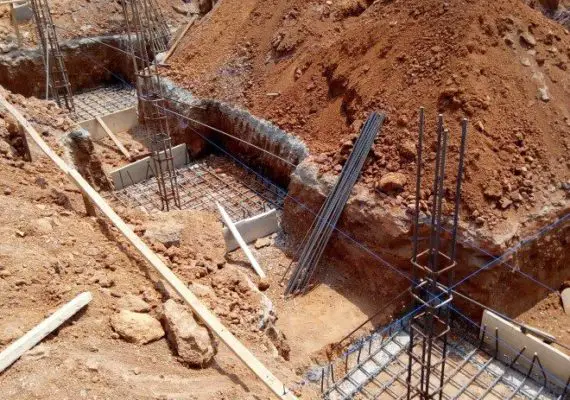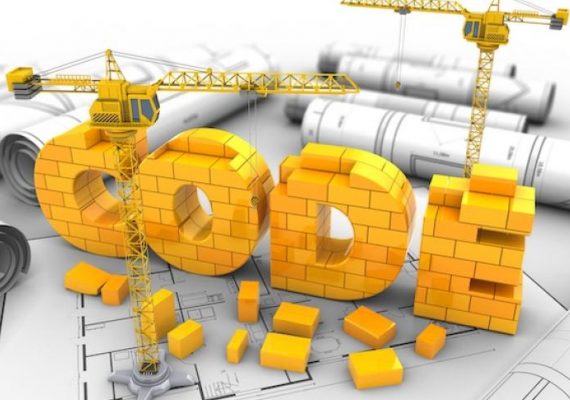What Is Board & Batten Siding? How To Use Board And Batten Siding
What Is Board & Batten Siding?
Board and batten siding is a type of siding made up of alternating thin strips of wood molding (battens) and wider boards or planks. This creates a decorative, textured, and layered effect with vertical lines that can be both chic and rustic.
While it has aesthetic appeal, it can also be durable and resistant to harsh weather conditions. Historically, it was used to cover the seams on barns and houses, providing insulation during the winter.
Today, it is used for its aesthetic appeal and can be made of various materials such as wood, vinyl, steel, or fiber cement.
The dimensions of the planks and battens will vary depending on the material and builder, but on average planks are 1’ wide x 10’ long and ½” thick, and the strips are 2 1/2 “ wide x 11’ long and ¾” thick.
Another style, shiplap, has recently seen a resurgence in popularity for interior design. It is similar to board and batten but the planks are run horizontally.
How To Use Board And Batten Siding
Board and batten siding is a traditional method where wooden battens are placed over the seams between wide boards to create a stronger and more energy-efficient siding. It was commonly used for structures such as barns and sheds due to its low cost and ease of assembly.
💥🎁 Christmas & Year-End Deals On Amazon !
Don't miss out on the best discounts and top-rated products available right now!
🛒 Shop Now and Save Big Today!*As an Amazon Associate, I earn from qualifying purchases.
It is sometimes referred to as barn siding, and even today it gives a house a comfortable, informal look. Additionally, board-and-batten shutters, which use the batten as a horizontal brace, are considered less formal than louvered shutters.
The material used for the board and batten does not have to be wood, the important aspect is the use of the batten with the board.
Reverse board and batten is an alternative version of this siding where the boards are narrow and the battens are wide and installed over the seams. The size variations of the siding will have a significant impact on how natural light creates shadows on the siding.
Use In Architecture
Board-and-batten siding, a popular method of adding architectural detail to buildings in the Victorian era, is often seen in informal architectural styles such as country homes and churches. Today, it can be combined with brick or stone exteriors or traditional horizontal siding.
Two examples of its contemporary use can be found in the planned community of Celebration, Florida and in a readers’ retreat cottage in northern California.
The use of board-and-batten siding in these structures creates a “homey” look and can make a house appear larger than it actually is.
💥🎁 Christmas & Year-End Deals On Amazon !
Don't miss out on the best discounts and top-rated products available right now!
🛒 Shop Now and Save Big Today!*As an Amazon Associate, I earn from qualifying purchases.
What Material Is Used For Board And Batten Siding?
Board and batten siding is a great way to give your home a beautiful, rustic look while still protecting it from the elements.
The materials you can choose from include wood, vinyl, steel and fiber cement. Wood is typically preferred by homeowners looking for an attractive, rustic look; vinyl is affordable and durable; steel provides great durability; and fiber cement is safe, durable, versatile and long-lasting.
Each material has its own unique pros and cons which should be considered before making a decision on what works best for your home.
For that reason it’s important to contact your local siding company so they can help assess which material would be the most suitable choice for you.
Advantages Of Board And Batten Siding
Board and batten siding has several benefits over other types of siding, such as brick, rock, and metal. These benefits include: aesthetic appeal and increase in resale value, durability, low maintenance, versatility, and affordability.
Board and batten siding can provide a rustic or modern look, and can be installed vertically or horizontally.
💥🎁 Christmas & Year-End Deals On Amazon !
Don't miss out on the best discounts and top-rated products available right now!
🛒 Shop Now and Save Big Today!*As an Amazon Associate, I earn from qualifying purchases.
While it may take more time to cover an entire house, the materials are often less expensive and quick to install. Additionally, unlike other types of siding, individual pieces can be replaced instead of having to replace large sheets or entire sections.
Disadvantages Of Board And Batten Siding
Board and batten siding can be an expensive option due to the labor-intensive installation process. The base layer will need installing, and then each individual batten has to be put up one by one, with a maximum of two feet between them.
This means that more material needs to be installed than with other siding options, leading to longer installation times.
Additionally, depending on the materials chosen, the cost of board and batten siding may not necessarily come in at a lower price than more traditional sidings.

